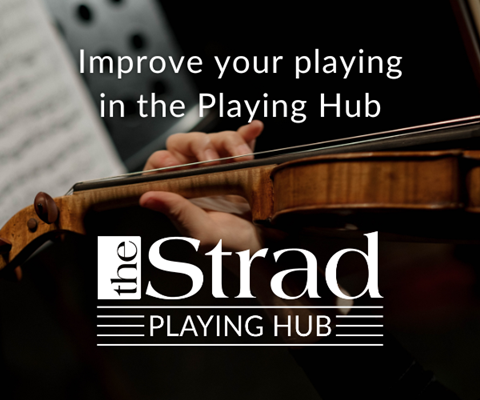Susanna Klein’s final article in her three-part series explores four traits of intentional practice sessions

Read more student and player guides in our Education Hub
Contrary to the popular saying, practice does not make perfect. But a thorough practice session has its own rewards, both for your happiness and for your playing - if done right. How we approach our practice matters. Here are some research-based strategies for deliberate and satisfying practice sessions.
According to the scientific literature, deliberate practice is different from plain old regular practice. Deliberate practice is the kind where we learn more quickly and retain more consistently. Deliberate practice also uses feedback loops to work in the most targeted way. How we arrange our time (what I call the anatomy of practice) also has a deep influence on our rate of progress - and how we feel about practice.
The Anatomy of Practice:
Space out your practice sessions
Two half-hour stints several hours apart is way better than one hour at a time. The more you space out your practice (think distributed, with big breaks), the more you have to dip into your long term memory to retrieve the information. This retrieval is vital to brain processing. Practising for several hours at a time only gives you the illusion of mastery - the next day some of your gains will be erased. Long breaks are vital for encoding and remembering.
Use interleaved practice regularly
Interleaved practice is when we take two or three bits and revisit them often rather than practising a single passage for a long time, and then moving on to the next. Let’s pretend you have four sections of a piece, and let’s label them ABCD. Interleaved practice means you would practise ACA then BCAB then DCBA, etc. Interleaved practice avoids the brain going on cruise control and muscle memory taking over. During interleaved practice you will be learning more actively, but in less amount of time - even if it doesn’t feel like it.
Engage in varied practice every day
Make practice varied in two ways. First, approach passages differently as often as you can. Try to avoid practising them the same way two days in a row, if at all possible. The best way to practise is around a passage - by de-constructing it in different ways. Varied means you are exploring different aspects of a section and trying different solutions. Secondly, varied also means changing the character of a phrase purposely to get to know it better. Play it not the way it is written, for exploration. Varied practice is more fun and engaging. Most importantly, it allows your brain to stay alert and curious.
Don’t overstay your welcome in the practice room
Research has shown we tend to remember an experience the way we ended it. So don’t wait until frustration sets in, leave the practice room when you feel good about your progress. This takes discipline. But the reward is that you will feel like coming back to practise more willingly because of the positive association. Leave your case open, it might be sooner than you expect!
Susanna Klein, associate professor of violin at Virginia Commonwealth University, is the author of the Practizma Practice Journal and the Practice Blitz YouTube Channel. Her research focuses on finding ways to make practice more delightful and insightful.
Read: 8 ways to make practice playful: Susanna Klein
Read: 6 tips for empowered recording: Susanna Klein
Read: Products December 2021: Clipza video recording app
Read more student and player guides in our Education Hub












































No comments yet